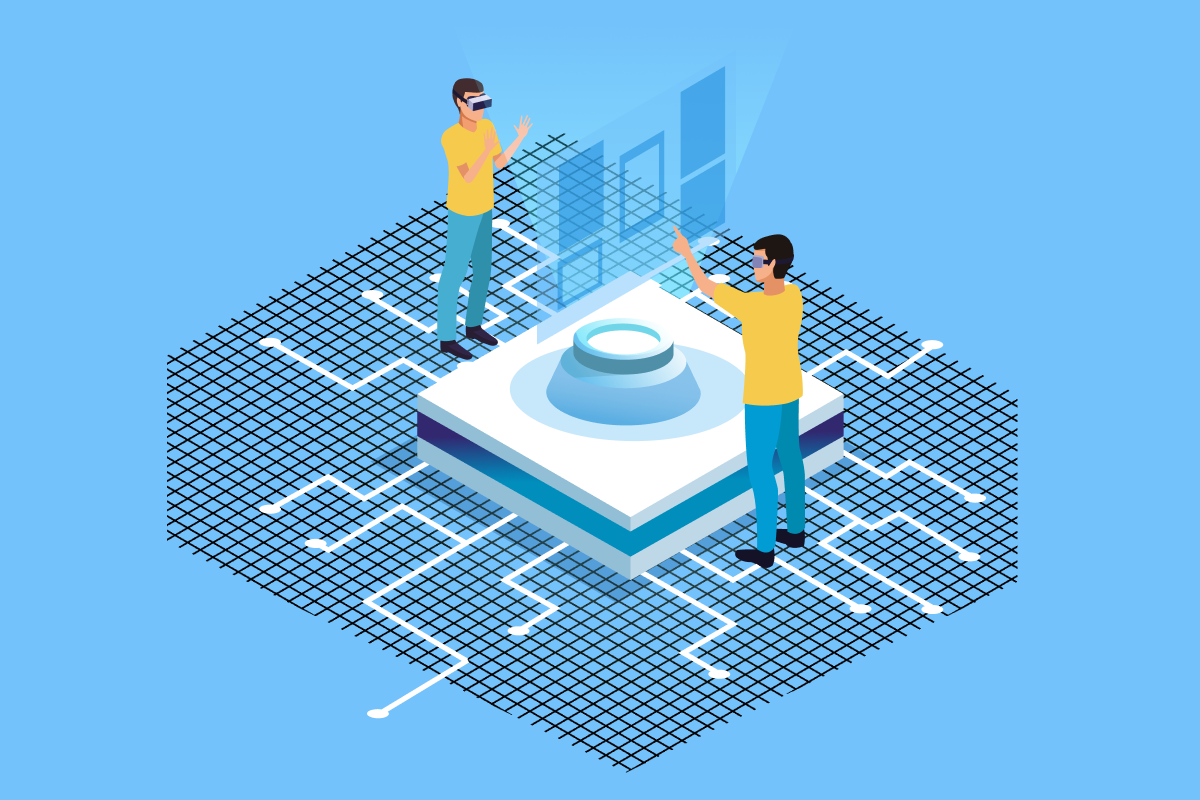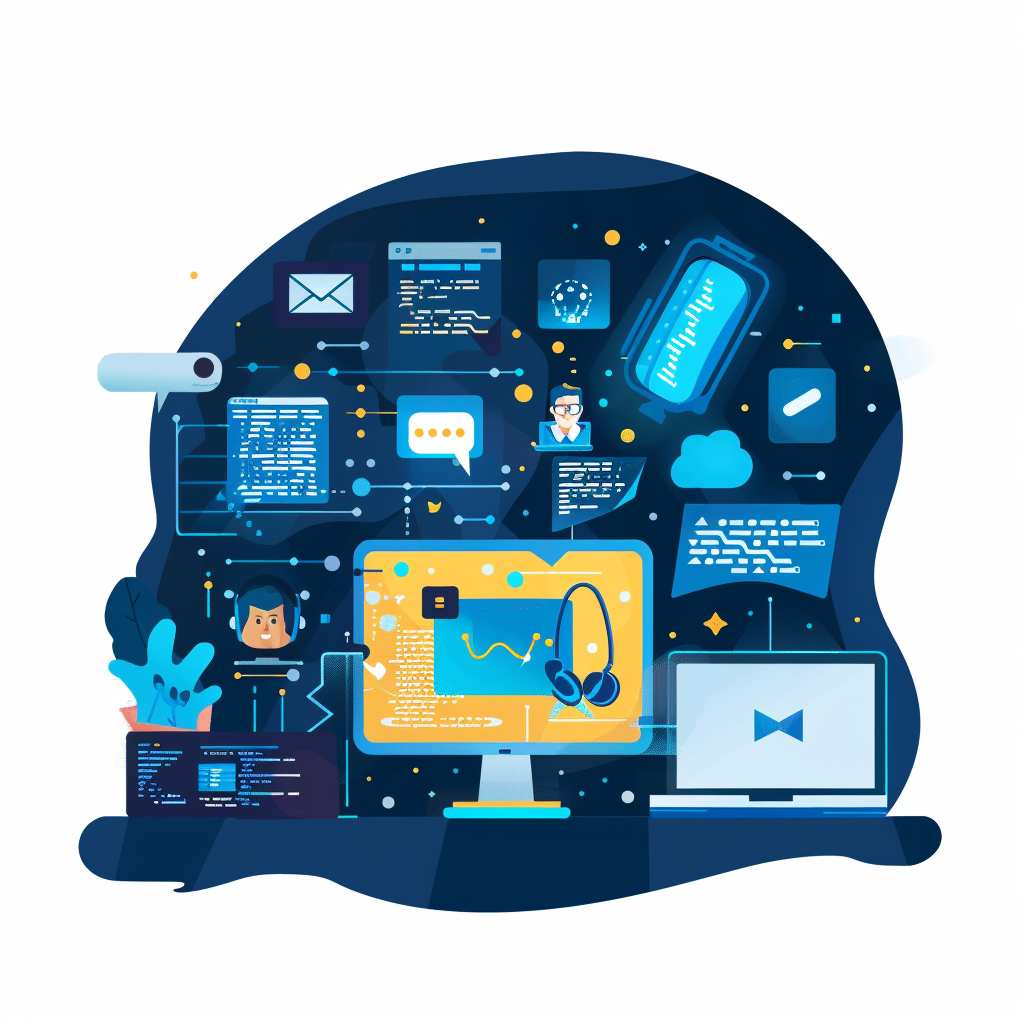There’s a transformation happening in the digital landscape, known as the shift from Web 2.0 to Web 3.0. This shift represents a change in mindset that could revolutionize how we utilize the internet to conduct business and interact with information.
In this blog post, we’ll explore the concept of Web 3.0, its underlying technology, and its ranging impacts across domains.
The Emergence of Web 3.0

Web 3.0, also called the Semantic Web or Decentralized Web, is essentially the generation of the World Wide Web. It focuses on utilizing machine data to enhance web transactions by making them smarter, more automated, and easier to comprehend.
It is important to look back at the previous steps of the Internet’s development to understand how this concept came about.
Web 1.0, the name given to the very first version of the Internet, consisted of flat web pages built using simple HTML code. While it provided a wealth of static information, it lacked interactive features and regularly-updated dynamic content.
When Web 2.0 emerged in the early 2000s, it triggered a significant shift in the way things were done. What set this movement apart was its inclusion of dynamic web content, user-generated content, and interactive apps. Internet users now consider social networks, blogs, and collaborative online tools as integral aspects of their lives.
Today, the idea of Web 3.0 has started to take shape. Unlike its predecessor, Web 3.0 is a big change, not just a small step forward. This next development step aims to make data more compatible, protect user privacy, and support individual freedom.
Technology Trends Underlying Web 3.0
As we continue exploring Web 3.0, we’ll delve into the fundamental technologies driving this transformative shift.
Decentralization: The Cornerstone of Web 3.0
A key principle of Web 3.0 is decentralization, which challenges the current state of Web 2.0, where most online activities occur on centralized platforms and apps owned by a few tech giants. In order to shift this paradigm, Web 3.0 leverages decentralized technologies such as blockchain to dismantle the existing centralized structure.
Blockchain, the groundbreaking technology behind cryptocurrencies like Bitcoin, is often hailed as the foundation of Web 3.0. This revolutionary ledger system enables individuals to securely store and transfer funds without relying on intermediaries. In essence, it is a decentralized digital record that cannot be altered, ensuring enhanced security and transparency.
Privacy and Data Ownership
Web 3.0 diverges from the practices of Web 2.0 by prioritizing user privacy and empowering users with control over their own data. In the past, our personal information was often collected without our awareness or consent, only to be used for targeted advertising and various business models. Thankfully, Web 3.0 grants people greater authority over their data, ensuring transparency and autonomy in the digital landscape.
According to a recent survey by the Pew Research Center, nearly 80% of American adults are concerned about how companies utilize their personal data. This growing apprehension regarding data security is fueling the demand for enhanced protection. The emergence of Web 3.0 aims to address these concerns by empowering users with ownership and control over their own data, moving us closer to achieving this goal.
Thanks to decentralized solutions and secure data storage on the blockchain, our digital footprint is now protected and cannot be bought or sold as a commodity.
Smart Contracts
Web 3.0 introduces the concept of smart contracts — self-executing and predefined rule-based coded agreements. These contracts automatically implement and enforce regulations once specific conditions are fulfilled.
The implementation of smart contracts has far-reaching implications in multiple industries. According to Valuates Reports, the global market for smart contracts is projected to reach $1460.3 million by 2029. The use of smart contracts in diverse sectors such as supply chain management, legal proceedings, and banking services is driving this significant growth. Overall, smart contracts are revolutionizing industries and transforming how business is conducted.
To illustrate this concept, let’s consider a potential scenario in the future. Imagine a time when online transactions no longer require trust in the seller or a third-party payment gateway. With the introduction of trustless transfers and smart contracts, the risk of fraud or default is eliminated. This transformative technology can revolutionize not only financial transactions but also legal agreements, real estate processes, and supply chain management.
Benefits of Web 3.0 Explained

Let’s delve deeper into the advantages offered by the decentralized web.
Anti-monopoly and Pro-privacy
Web 3.0 aims to reduce the excessive power of tech giants by embracing a decentralized approach. This updated version of the web promotes healthy competition and diminishes the dominance of a few major corporations. Web 3.0 technologies, such as blockchain, enable the creation of decentralized applications (dApps) that can rival centralized platforms.
Web 3.0 also prioritizes user privacy, empowering individuals to determine who can access their personal data. For instance, the General Data Protection Regulation (GDPR) in Europe grants users the right to manage how their data is utilized. This approach aligns with evolving data protection regulations.
Secure Network
Web 3.0 greatly enhances security by distributing data across a network of nodes. Utilizing cryptography, blockchain, one of the building blocks of Web 3.0, ensures secure interactions. Notably, cryptocurrencies like Bitcoin and Ethereum have never experienced significant security breaches, exemplifying the robustness of these decentralized systems.
User Data Ownership
In Web 3.0, people, not businesses, own digital information. This means that users maintain full control over their personal data and can even profit from it.
Interoperability
Web 3.0’s “data network” aims to dissolve data silos. Its interoperability facilitates the sharing and analysis of data across various devices.
No Interruption in Service
In the realm of Web 3.0, decentralized networks act as the resilient and interconnected web that repairs itself, making it easier to address system issues. For example, the InterPlanetary File System (IPFS) ensures that information remains accessible even if servers or data centers encounter disruptions.
Permissionless Blockchains
Web 3.0 projects and platforms, such as Ethereum, are built on decentralized chains that don’t require approval. This means anyone can join them, whether by creating applications, running a node, or contributing to the consensus. This open model promotes innovation and encourages openness in the ecosystem.
Semantic Web
The Semantic Web enhances data by adding machine-readable information, enabling the development of advanced AI-driven applications. Therefore, in the future, we may have virtual personal assistants that can read our emails and calendar events and even book flights, schedule meetings, and make reservations on our behalf. This semantic complexity enables intelligent automation and efficient search capabilities.
Ubiquity
Web 3.0 aims to bridge the digital divide by connecting individuals who currently lack network access. For instance, SpaceX’s Starlink project strives to bring high-speed internet to remote and underserved areas globally. By closing the digital gap, Web 3.0 opens up new opportunities for education, e-commerce, and telemedicine.
Examples of Web 3.0 at Work: Shaking Up Industries

Today, Web 3.0 is disrupting industry after industry. Let’s discover some examples where this change has made a significant impact.
Decentralized finance (DeFi): DeFi platforms are emerging as alternatives to traditional banking systems in the financial world, built on blockchain and smart contract technologies. These platforms enable users to engage in a variety of economic activities, such as selling, lending, and borrowing, without relying on traditional banks.
Management of healthcare data: Blockchain is utilized in the healthcare industry to enhance data protection, interoperability, and patient privacy. Health records stored on a blockchain are secure and can be easily shared among authorized medical professionals. As a result, this technology improves patient care and reduces unnecessary administrative tasks.
Social media: Emerging social media platforms, rooted in the principles of Web 3.0, prioritize user privacy, data ownership, and the equitable monetization of content. Users are now able to engage with social networks while retaining complete control over their personal data and receiving fair compensation for sharing it. According to Forbes, the growth of blockchain-based social media companies continues to skyrocket as an increasing number of individuals seek viable alternatives to the established networks.
Conclusion: Capitalizing on the Prospects of Web 3.0
The current transition from Web 2.0 to Web 3.0 represents progress towards openness, fairness, and user-centricity. The speed at which Web 3.0 is adopted into our daily lives will depend on technological breakthroughs, legislative determinations, and societal reception.
However, considering the ongoing revolutionary era, it is essential to maintain awareness and active involvement in these advancements. Overall, Web 3.0 can be seen as more than a simple progression of the internet — it signifies a crucial transformation in our understanding and interaction with the digital domain.





